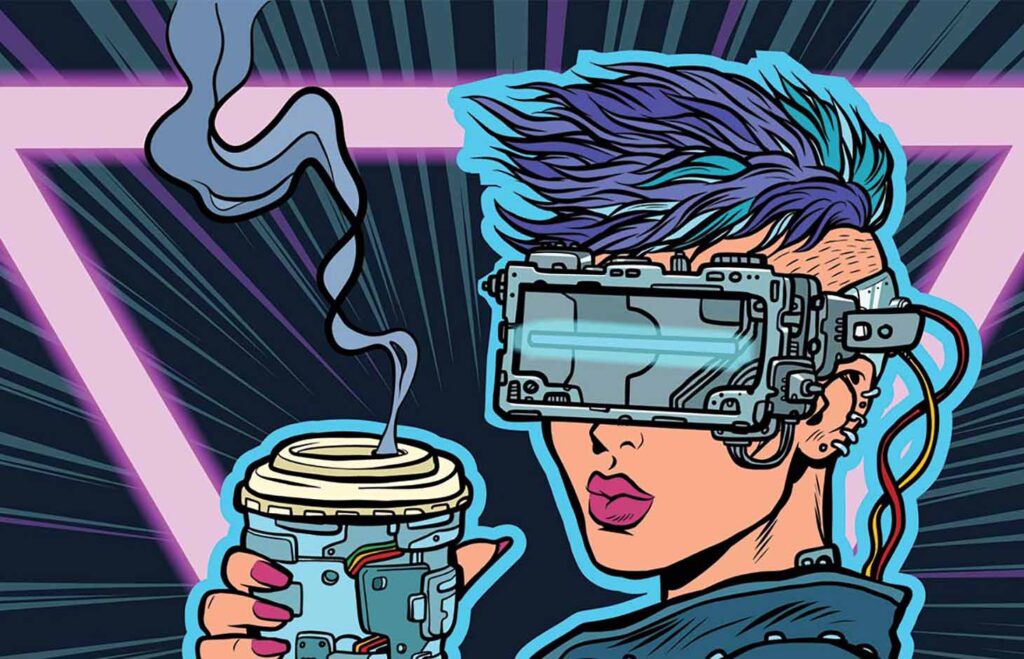The IoT (Internet of Things) has sparked a rapidly evolving digital revolution. Billions of internet-connected sensors and hubs now collect, store, communicate, and analyze data in many environments and situations.
Rapid technological advances are enabling a growing capability to harness data and generate useful insights. And beyond developing new solutions for problems, and new products and services, IoT-based technology is opening doors to new business models.
With an estimated 50 billion devices expected to be connected to the internet by the end of 2020, and 125 billion by 2030, competitive dynamics within industries are shifting.
As a $248 billion industry, the IoT is already a behemoth influence in tech. And yet, it’s only scratched the surface. By 2025, that figure is expected to reach $1,567 billion.
In addition to revenue, the vast amount of data the IoT generates massively impacts a number of industries. These impacts are already disrupting traditional business models in multiple industries. Here are some notable developments.
1. Automotive & telematics
Perhaps the most fantasized-about industry of the future, automotive businesses have already harnessed the IoT and big data in countless ways. In fact, existing connected cars already upload 25 gigabytes of data to the cloud per hour, VentureBeat reports.
What’s more, telematics—or the use of the IoT and other technology to monitor vehicles—could reportedly unlock $1.5 trillion in future revenue and contribute 25 billion terabytes of data to the IoT annually by 2025.
These developments haven’t quite put the flying car in reach, but are just as exciting.
From improving road safety to optimizing fleet management, IoT technology has unlocked a number of telematics breakthroughs just in the last decade.
Add developments like driverless cars, advanced vehicle-to-vehicle (V2V) and vehicle-to-environment (V2X) communication systems, and the potential is limited only by your imagination.
2. Smart homes getting smarter
In 2019, there were over 17 billion connected IoT devices installed in smart homes worldwide. And that number has been growing. Each type of device generates anywhere from 50MB to 400GB of data a month, making smart homes huge data generators.
Even before IoT connectivity to one’s home was a reality, entrepreneurs were eager to create smart home technology. The idea that a person could use voice commands to control lighting, temperature, and more in their home appeared in fiction and media decades ago.
Thanks to the IoT, voice command technology is now available to most consumers. From Amazon’s Echo to Google’s Home, a customer only needs a Wi-Fi connection to begin adding smart devices ready to activate on command.
But why stop there?
Developing automation and integration means that smart homes can turn off lights as one leaves a room, and unlock the door using facial recognition—removing the need even for voice control. Smart refrigerators can order groceries based on what’s left inside.
New applications abound in home security. Customers can access cameras via mobile phones when alerted that something may be wrong.
Some of the best systems offer components that work together seamlessly, and can be customized in any number of ways, from having the lights turn on when motion is detected to having the doors unlock when a smoke alarm goes off, and almost anything in between.
Thanks to the IoT, futuristic home living is here.
3. Watches and more become wearables
With smartwatches now available to consumers at various price points, it isn’t uncommon to know somebody who uses one to monitor their heart rate or track steps. In fact, 2019 saw 91.8 million unit sales in smartwatches alone, relaying an estimated 209 petabytes of data per month.
Wearables go beyond fitness watches, and even beyond health monitoring.
Swiss watch brand Kronabay retains its timepieces’ classic designs, but added IoT connectivity to enable contactless payment, step counting, and camera phone control.
Leaf’s Safer Smart Jewelry features an SOS button that, when used, sends the user’s pre-set contact their location. It can also help the user navigate to the nearest hospital or police station.
And the Realwear helmet keeps industrial workers’ heads protected while providing all the convenience and efficiency of an internet-connected tablet.
4. Healthcare gets modernized
Thanks to wearables and other IoT innovations, the healthcare sector is also rapidly developing.
Using sensors and apps, patients can now relay weight, blood pressure, and more to their doctor without having to visit the office. In particular, devices that identify and monitor diabetes range from wearable devices to IoT-enabled contact lenses.
Back in 2011, the U.S. healthcare system alone had already stored 150 exabytes, or one billion gigabytes, of data. Today, the total is estimated to be in the zettabytes.
In hospitals, the IoT offers measurable results in patient care. In 2018, the Allure Group patented sensors and algorithms for a system called EarlySense. Installed and implemented at Allure’s Bedford Center, the IoT system is credited with a 45% reduction in patient falls, a 60% reduction in bedsores, and an 80% reduction in code blue events.
Especially exciting in IoT-enabled healthcare is the large amount of potentially life-saving data produced by monitored patients.
Rather than gathering test subjects for a study to follow up with individually, or researching and compiling past medical cases to inform reports, the easily accessed cumulative data of thousands of patients will inform future medical developments.
This, of course, requires a high level of privacy and security considerations.
5. Finance & security
The continual advances in IoT have been impacting consumer expectations of convenience. As a result, financial institutions seeking to stay competitive have made calculated moves to keep up.
People now enjoy banking and financial services not only at branches, ATMs, and card readers, but also on laptops, tablets, smartphones, and, increasingly, wearables like watches, wristbands, and eyewear connected to their bank via IoT technology.
This convenience opens an opportunity for financial institutions. They use the incoming flood of detailed customer data from IoT devices to shape financial recommendations, business valuations, insurance decisions, and more.
Understandably, business and financial institutions must approach these developments with security in mind. With interconnectivity at the center of IoT functionality, how will the financial industry ensure safe adoption?
Consumers and businesses need safeguards to protect their privacy and security, but continue to grow accustomed to the convenience offered by IoT-based services.
Failure to adapt could set some behind.
6. Informed Insurance
As financial technology evolves, so do opportunities for new insurance models. Usage-based, even per-mileage vehicle insurance has become available enough to warrant “Best of 2020” lists.
Auto policies are far from alone in the disruption. Home and health insurance providers now also harness the IoT and Big Data.
In the case of health insurance, IoT devices mean real-time data will help not only with risk assessment and loss prevention but also help providers understand the impact of wellness programs and preventative care.
The insurance industry is being transformed in many ways beyond the growing collection of data. Enter Wefox, an all-in-one insurance platform that connects insurance providers, brokers, and customers.
Launched by the Wefox Group, this Berlin-based insurtech startup has already begun disrupting the insurance space, effectively building an insurance marketplace that is changing how insurance coverage is sold and delivered.
7. Retail staying relevant
Big data is also impacting the retail industry. In fact, IBM found that 62% of retailers report the use of information and analytics is creating a competitive advantage for their organizations.
Aruba estimated that 79% of retail organizations would adopt IoT technology by 2019. These adoptions include things like smart shelves, which automatically track inventory, and GPS-like beacon apps that alert customers that they’re near a store, or near a product they’ve previously purchased.
And while self-checkout has reduced the number of cashiers necessary at many stores, automated checkout takes things a step further.
Using a payment method linked through a store app, customers using automated checkout are charged for items scanned as they leave. Amazon Go stores even use in-store cameras to track customer purchases before they make it to the exit, negating the need for any checkout process at all.
The future is now.
For these industries, and certainly many more to come, the IoT disruption is here. As history has demonstrated, the ability to adapt is a strong indicator of business success in times of great change.
Adapting will take more than finding solutions for gathering and storing IoT data; it will also require finding ways to effectively manage, process, and analyze it, not to mention monetize it and perform accurate IoT billing.
Businesses that prepare and develop agile solutions to the incoming data disruption are most likely to come out on top.








